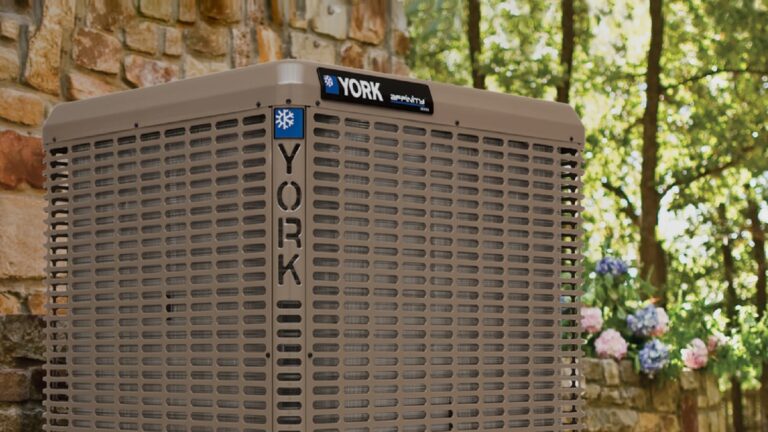Key Takeaways
- Carpet removal costs $0.70 to $1.60 per square foot on average, with most homeowners spending between $140 and $320 per room (200 SF).
- The total cost to remove carpet depends on the type of carpet, the size of the area, and the complexity of the job (e.g., stairs, glued-down carpet, etc.).
- Removing glued-down carpet or carpet in basements or on stairs may cost more due to the additional time and labor required.
- While DIY carpet removal can save money, it is a time-consuming and physically demanding job that may require specialized tools and disposal fees.
- Hiring a professional carpet removal service ensures the job is done efficiently and safely, and may be more cost-effective for larger projects or difficult installations.
At Renotag, we know that removing old, worn-out carpet is often the first step in a flooring renovation project. Whether you’re planning to install new carpet, hardwood, or tile, getting rid of the old carpet is a necessary but sometimes challenging task. So, how much does carpet removal actually cost, and what factors affect the price? Let’s break it down.
Carpet removal cost
The cost to remove carpet varies depending on the size of the area, the type of carpet, and the complexity of the job. Here’s a rough estimate of the average costs based on room size:
| ROOM SIZE (SQUARE FEET) | AVERAGE COST* |
|---|---|
| 100 | $70 – $160 |
| 200 | $140 – $320 |
| 400 | $280 – $640 |
| 600 | $420 – $960 |
| 800 | $560 – $1,280 |
| 1,000 | $700 – $1,600 |
As you can see, the cost to remove carpet ranges from $0.70 to $1.60 per square foot, with most homeowners spending between $140 and $320 for a typical 200-square-foot room.
Of course, these are just rough estimates, and your actual cost may be higher or lower depending on the specific details of your project. Let’s take a closer look at some of the factors that can affect the price of carpet removal.
Cost to remove carpet by type
The type of carpet you have can have a big impact on the cost and difficulty of removal. Here’s a breakdown of the average costs for different types of carpet:
| CARPET TYPE | AVERAGE COST TO REMOVE PER SQUARE FOOT* |
|---|---|
| Wall-to-wall carpet and pad | $0.70 – $1.60 |
| Glued carpet + padding underneath | $0.75 – $1.80 |
| Basement carpet | $0.95 – $1.55 |
| Stair carpet | $7.00 – $10.00 per stair |
Wall-to-wall carpet and pad
Wall-to-wall carpet with a separate padding underneath is the most common type of residential carpet installation. This type of carpet is typically installed using tack strips around the perimeter of the room, which hold the carpet in place without the need for adhesives.
Removing wall-to-wall carpet and padding is relatively straightforward, as the carpet can simply be pulled up from the tack strips and rolled up for disposal. The padding underneath can then be easily removed and rolled up separately.
The average cost to remove wall-to-wall carpet and padding is $0.70 to $1.60 per square foot. This price includes the labor to pull up the carpet and padding, as well as the cost to dispose of the materials.
Glued carpet
In some cases, carpet may be glued directly to the subfloor without a separate padding layer. This is more common in commercial installations or in areas where a very low pile carpet is desired, such as in basements or on stairs.
Removing glued-down carpet is more challenging and time-consuming than removing wall-to-wall carpet, as the adhesive must be scraped or chiseled off the subfloor after the carpet is removed. This can add significant time and labor to the project.
The average cost to remove glued-down carpet is $0.75 to $1.80 per square foot. This price includes the labor to pull up the carpet and scrape the adhesive, as well as the cost to dispose of the materials.
Basement carpet
Carpet in basements is often installed over concrete subfloors, which can present unique challenges for removal. Basement carpet may be glued down directly to the concrete, or it may be installed over a separate padding layer.
In addition to the challenges of removing glued-down carpet, basement carpet may also be more prone to moisture damage, mold, or mildew. This can make the removal process more difficult and may require additional cleanup or remediation.
The average cost to remove basement carpet is $0.95 to $1.55 per square foot. This price includes the labor to pull up the carpet and dispose of the materials, as well as any additional costs for removing glued-down carpet or addressing moisture issues.
Stair carpet
Removing carpet from stairs is a more labor-intensive and time-consuming process than removing carpet from flat surfaces. The carpet must be carefully pulled up from each individual stair tread and riser, and any staples or tack strips must be removed as well.
In addition, stairs often have more wear and tear than other areas of the home, which can make the carpet more difficult to remove. The tight spaces and angles of stairs can also make the job more challenging and require specialized tools.
The average cost to remove carpet from stairs is $7.00 to $10.00 per stair. This price includes the labor to pull up the carpet and dispose of the materials, as well as any additional costs for removing staples or tack strips.
Carpet removal cost calculator
In addition to the type of carpet and the size of the area, there are a few other factors that can impact the cost of carpet removal. Here’s a breakdown of some of the key cost factors:
Labor
The cost of labor is one of the biggest factors in the total cost of carpet removal. Most carpet removal professionals charge by the square foot, with rates ranging from $0.50 to $1.50 per square foot on average.
The exact labor cost for your project will depend on several factors, including:
- The size of the area
- The type of carpet and installation method
- The condition of the subfloor
- The complexity of the job (e.g., stairs, multiple rooms, etc.)
- The experience and reputation of the carpet removal service
In general, larger projects or more complex installations will cost more in labor than smaller, simpler jobs. However, some carpet removal services may offer discounts for larger projects or bundle pricing for removing carpet and installing new flooring.
It’s important to get detailed quotes from multiple carpet removal services to ensure you’re getting a fair price for the work. Be sure to ask about any additional fees or charges, such as disposal fees or minimum service charges.
Remove and replace flooring
If you’re planning to install new flooring after removing your old carpet, you may be able to save money by bundling the removal and installation services together. Many flooring contractors offer carpet removal as part of their installation packages, and may be able to offer discounted pricing for the combined services.
The cost to remove and replace flooring will depend on several factors, including:
- The type of new flooring you’re installing (e.g., carpet, hardwood, tile, etc.)
- The size of the area
- The condition of the subfloor
- The complexity of the installation (e.g., stairs, multiple rooms, etc.)
- The experience and reputation of the flooring contractor
On average, you can expect to pay between $2 and $8 per square foot for basic carpet removal and installation, or $5 to $15 per square foot for removing carpet and installing hardwood or tile.
However, these are just rough estimates, and your actual cost may be higher or lower depending on the specific details of your project. It’s important to get detailed quotes from multiple flooring contractors to ensure you’re getting the best value for your money.
Carpet removal FAQs
Should I repair, clean, or remove and replace my carpeting?
If your carpet is starting to show signs of wear and tear, you may be wondering whether it’s worth repairing, cleaning, or replacing it altogether. Here’s a breakdown of the pros and cons of each option:
| FACTOR | PROS | CONS |
|---|---|---|
| Repairing carpet | – Repairs save money. – Repairs extend the carpet’s lifespan. – Patches save time compared to a full replacement. | – Repairing carpet won’t hide extensive damage. – Patchwork won’t perfectly blend with the rest of the carpet. – If the carpet is old, it may be more cost-effective to replace it. |
| Cleaning carpet | – Cleaning is the cheapest & quickest solution. – Regular cleaning extends a carpet’s lifespan & keeps it looking new. – Cleaning reduces allergens & improves indoor air quality. | – Some stains or odors may be too deep-set to fully remove. – Frequent deep cleaning causes wear & tear over time. – Cleaning won’t restore very old, worn-out carpets. |
| Replacing carpet | – New carpet updates the room design. – Removing old carpet eliminates allergens, pests, or mold trapped in old carpeting. – New carpet adds value to the home. | – A replacement is the most expensive option. – Replacing carpet is time-consuming. – Old carpeting requires proper disposal. |
Ultimately, the best option for you will depend on the condition of your carpet, your budget, and your long-term goals for your home. If your carpet is relatively new and only has a few minor stains or spots, cleaning or repair may be the most cost-effective solution. However, if your carpet is old, worn, or extensively damaged, replacement may be the best choice for improving the look and value of your home.
How long does it take to remove carpet?
The time it takes to remove carpet depends on the size of the area, the type of carpet and installation method, and the complexity of the job. On average, a professional carpet removal service can remove carpet from a typical 200-square-foot room in about 1-2 hours.
However, larger areas or more complex installations (e.g., glued-down carpet, stairs, etc.) may take longer. In general, you can expect the following timelines for different types of carpet removal projects:
- Wall-to-wall carpet and pad: 1-2 hours per room
- Glued carpet: 2-4 hours per room
- Basement carpet: 2-4 hours per room
- Stair carpet: 1-2 hours per flight of stairs
Keep in mind that these are just rough estimates, and your actual timeline may be longer or shorter depending on the specific details of your project. It’s a good idea to discuss the timeline with your carpet removal service upfront to ensure that you have a realistic expectation of how long the job will take.
Is it worth removing a carpet myself, and is it easy?
Removing carpet yourself can be a cost-effective way to save money on your flooring renovation project. However, it’s important to weigh the pros and cons before tackling the job yourself.
Here are some of the advantages of DIY carpet removal:
- Cost savings: Removing carpet yourself can save you hundreds or even thousands of dollars in labor costs, depending on the size of your project.
- Flexibility: DIY carpet removal allows you to work on your own schedule and timeline, without the need to coordinate with a professional service.
- Sense of accomplishment: Completing a home improvement project yourself can be a rewarding and satisfying experience.
However, there are also some potential drawbacks to consider:
- Time and effort: Removing carpet is a physically demanding and time-consuming job, particularly for larger areas or more complex installations.
- Tools and equipment: You may need to rent or purchase specialized tools, such as a carpet knife, pry bar, or power stretcher, to complete the job.
- Disposal: You’ll need to figure out how to properly dispose of the old carpet and padding, which may require renting a dumpster or hauling the materials to a landfill yourself.
- Potential damage: If you’re not careful, you could damage the subfloor or walls while removing the carpet, which could add to your overall project costs.
So, is it easy to remove carpet yourself? The answer depends on your level of experience, physical ability, and willingness to put in the time and effort. If you’re handy and have some basic home improvement skills, removing carpet can be a relatively straightforward process. However, if you’re unsure of your abilities or don’t have the time or energy to tackle the job yourself, it may be worth hiring a professional service.
What is the fastest way to remove carpet?
The fastest way to remove carpet is to use the right tools and techniques for the job. Here are some tips for removing carpet quickly and efficiently:
- Clear the room: Remove all furniture and belongings from the room before starting the carpet removal process. This will give you a clear workspace and prevent damage to your belongings.
- Cut the carpet into strips: Using a sharp utility knife or carpet knife, cut the carpet into manageable strips (about 2-3 feet wide) starting at one wall and working your way across the room. This will make it easier to roll up and remove the carpet in sections.
- Pull up the carpet: Starting at one corner of the room, grab the edge of the carpet and pull it up and away from the tack strips along the wall. Continue pulling the carpet strip across the room, rolling it up as you go.
- Remove the padding: Once you’ve removed all of the carpet strips, you’ll be left with the padding underneath. Simply pull up the padding and roll it up for disposal.
- Remove the tack strips: Using a pry bar or pliers, carefully remove the tack strips along the perimeter of the room. Be sure to wear gloves to protect your hands from the sharp tacks.
- Dispose of the materials: Roll up the carpet and padding and dispose of them properly, either by hauling them to a landfill or renting a dumpster for larger projects.
By following these steps and using the right tools, you can remove carpet quickly and efficiently, whether you’re doing the job yourself or hiring a professional service.
Can I recycle my carpet?
Yes, in many cases, you can recycle your old carpet instead of sending it to a landfill. Carpet recycling is becoming increasingly common, with many recycling centers and flooring retailers offering programs to collect and repurpose old carpet materials.
Here are some of the benefits of recycling your carpet:
- Environmental impact: Recycling carpet keeps it out of landfills, where it can take hundreds of years to decompose and release harmful chemicals into the environment.
- Resource conservation: Recycled carpet can be used to create new products, such as automotive parts, building materials, and even new carpet, reducing the need for virgin resources.
- Cost savings: Some carpet recycling programs may offer incentives or discounts for recycling your old carpet, which can help offset the cost of your new flooring installation.
To recycle your carpet, start by checking with your local recycling center or waste management company to see if they offer carpet recycling services. You can also check with your flooring retailer or installer, as many companies now offer recycling programs as part of their installation services.
Keep in mind that not all types of carpet can be recycled, and some recycling programs may have specific requirements for the condition and materials of the carpet. In general, nylon and polyester carpets are the most easily recycled, while wool and other natural fiber carpets may be more difficult to repurpose.
If you’re unable to recycle your carpet, be sure to dispose of it properly according to your local waste management guidelines. Improper disposal of carpet can lead to environmental and health hazards, so it’s important to take the necessary steps to ensure safe and responsible disposal.
Getting estimates from a carpet removal service
If you’re planning to hire a professional carpet removal service, it’s important to get detailed estimates from multiple providers to ensure you’re getting the best value for your money. Here are some tips for getting accurate and comprehensive estimates:
- Measure your space: Before contacting carpet removal services, measure the square footage of the area where you need carpet removed. This will help you provide accurate information to potential providers and ensure that you’re getting apples-to-apples comparisons between estimates.
- Provide detailed information: When requesting estimates, be sure to provide as much detail as possible about your project, including the type of carpet, the installation method, the condition of the subfloor, and any special considerations (e.g., stairs, furniture removal, etc.). The more information you can provide upfront, the more accurate your estimates will be.
- Get multiple estimates: It’s a good idea to get estimates from at least three different carpet removal services to compare prices and services. Don’t automatically go with the lowest price, as this may not always reflect the best value or quality of work.
Ask for references: When considering a carpet removal service, ask for references from past clients and examples of their work. A reputable provider should be happy to provide this information and put you in touch with satisfied customers.
Get it in writing: Once you’ve chosen a carpet removal service, be sure to get a detailed written estimate that outlines the scope of work, pricing, timeline, and any additional fees or charges. Review the estimate carefully and ask questions about anything you don’t understand before signing a contract.
Questions to ask
When getting estimates from carpet removal services, here are some key questions to ask:
- How long have you been in business?
- Are you licensed and insured?
- What is your experience with projects like mine?
- How do you charge for your services (e.g., by square foot, hourly, etc.)?
- What is included in your estimate (e.g., removal, disposal, moving furniture, etc.)?
- How long will the project take to complete?
- What kind of equipment and techniques do you use to remove carpet?
- How do you handle disposal of the old carpet and padding?
- Do you offer any discounts or promotions?
- What kind of payment methods do you accept?
- Do you offer any warranties or guarantees on your work?
By asking these questions and carefully reviewing the estimates you receive, you can make an informed decision and choose the right carpet removal service for your needs and budget.
Removing old carpet is a necessary step in many flooring renovation projects, but it can be a daunting and time-consuming task. By understanding the costs and factors involved in carpet removal, and weighing the pros and cons of DIY vs. professional services, you can make an informed decision and ensure a successful outcome for your project.
At Renotag, we’re here to help you navigate the carpet removal process with confidence. Check out our other cost guides and articles for more tips and insights on flooring renovation projects, and be sure to get multiple estimates from reputable carpet removal services to ensure you’re getting the best value for your money.







